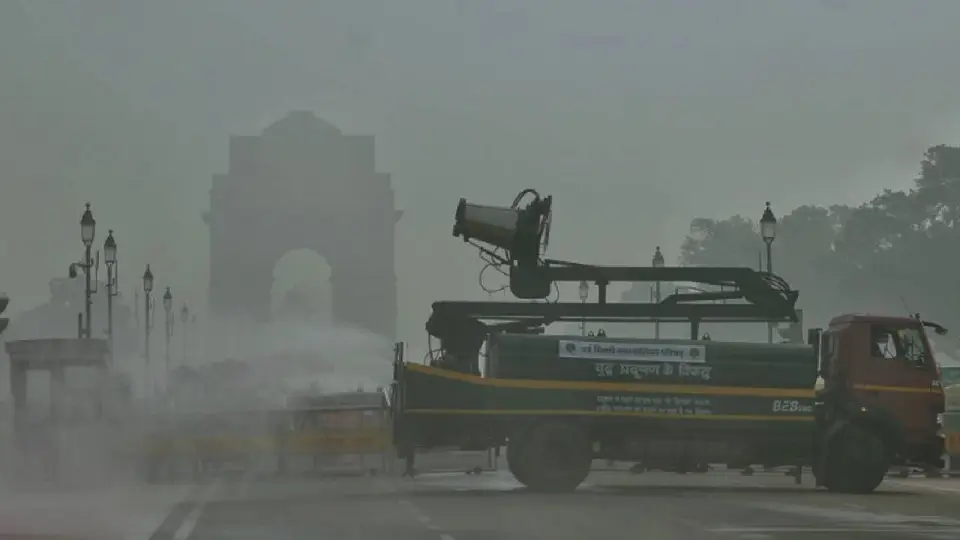
Credit:Top Indian News (Credit:Top Indian News)
National News: The national capital recorded an AQI of 332 at 6 am on Thursday, while Wednesday’s 24-hour average stood at 353, the highest so far this season. With consecutive days of rising pollution, residents are finding it increasingly difficult to breathe. Multiple localities in Delhi reported air quality levels in the “very poor” and “severe” categories, posing serious health risks.
Anand Vihar topped the list with an alarming AQI of 429, classified as “severe.” Jahangirpuri registered 367, Wazirpur 365, and ITO 353, all in the “very poor” range. Ashok Vihar at 350 and Burari at 348 also reflected hazardous conditions. Punjabi Bagh and Sonia Vihar weren’t far behind, while Alipur stood at 300 in the “poor” range, still unsafe for sensitive groups.
The toxic air is not confined to Delhi alone. Gurugram’s Sector 51 reported an AQI of 288, while Ghaziabad’s Indirapuram registered 271. Noida’s Sector 125 clocked 308, placing it firmly in the “very poor” zone. This shows how the pollution crisis has engulfed the entire NCR, with millions of residents at risk of health problems.
According to senior IMD scientist Krishna Mishra, winds have shifted from easterly to westerly but remain too weak to disperse pollutants. “Nighttime winds are nearly calm, and daytime winds only reach 5-7 kmph,” he said. A weak western disturbance may arrive around October 27, but it is unlikely to bring rain or strong winds to ease pollution.
Throughout the day, a thick layer of smog covered Delhi. Sunlight failed to penetrate the pollution, leaving the city under a constant grey haze. With falling temperatures and stagnant air, pollutants remain trapped close to the ground. Hospitals are already reporting more cases of respiratory distress, eye irritation, and asthma complications.
The situation worsened after Diwali fireworks added to existing emissions. Briefly on Tuesday, winds picked up and cleared some smoke, but conditions worsened again as winds slowed by nightfall. With temperatures dipping, the toxic cocktail of gases and particulates accumulated, leading to back-to-back spikes in AQI levels.
Forecasts from the Centre’s Air Quality Early Warning System (EWS) predict Delhi’s AQI will stay in the “very poor” category until Saturday. Afterward, air quality may fluctuate between “poor” and “very poor” for the next week. For residents of Delhi-NCR, masks, air purifiers, and precautions remain the only defense against this prolonged pollution crisis.













Copyright © 2025 Top Indian News
